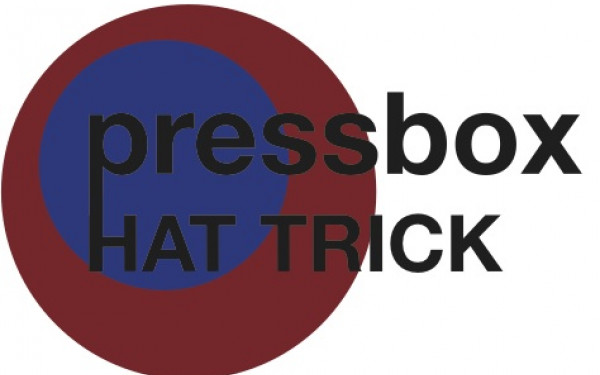End of an Era
Quebec’s Two Professional Women’s Soccer Teams Forced to Shut Down in 2016
When the W-League announced it would shut its doors in 2016, it meant the Laval Comets and Dynamo de Québec would have to find a new place to play.
Weeks later, the teams announced that pending the approval of the Canadian Soccer Association, they would play next season in a newly created league: United Women’s Soccer.
Then, suddenly, hopes of joining UWS went up in flames. The Canadian Soccer Association sent letters to both clubs letting them know their requests to join the U.S.-based league were denied.
The Link contacted the CSA and was given the following statement regarding their decision:
“[The Quebec Soccer Federation] has women’s amateur soccer available to these teams. Canada Soccer is supportive of developing the game in Canada through the leagues and opportunities available within the country rather than allowing teams to participate in similar leagues in other countries.”
Dynamo de Québec’s sporting director Helder Duarte does not believe the current amateur setup in the province, with the Ligue de soccer élite du Québec at the top of its pyramid, is at the same level as American leagues.
_900_1033_90.jpg)
“It’s not even close,” said Duarte. “I was implicated in this league and I can tell you that it’s not the same thing at all.”
With limited options offered to them, the Laval Comets took to their Facebook page on March 9 to announce that they would cease operations for 2016.
On Quebec’s side, Duarte confirmed the Dynamo would not be playing top-level soccer in 2016 either.
“We have nothing at all,” he said. “What we know is that we will try to do something for next year. But for this year, it’s for sure that there is nothing to do—nothing.”
Across the border, there is still uncertainty as to why the CSA decided not to let the Dynamo and the Comets in UWS. The league’s website featured the logos of the two teams until recently.
UWS commissioner Joe Ferrara didn’t really think of Canada as expansion territory, but the league wanted to have both Quebec and Laval in their ranks. Loyalty and camaraderie between the teams were the reason UWS wanted them back.
“When we started this process we asked ourselves ‘what are we going to name this league?’ and it originally came out as AWS: American Women’s Soccer,” Ferrara said. “Then former W-League teams said, ‘well, what about the two Canadian teams?’ So we said, ‘let’s change it and go with United Women’s Soccer,’ thinking that we could include the two Canadian teams.”
Now that this is not the case anymore, players have been feeling insecure about the situation and are looking at the U.S. for a place to play. Duarte has lost players and two coaches, whereas Ferrara has received calls from players asking for contacts with teams from his league.
“I find this disappointing, when paradoxically, the head coach of the [Canadian] national team asks his players to go to American universities,” Duarte added. “He wishes they [wouldn’t] go play there, but the CSA doesn’t allow two teams from Quebec to go play at a good level. I find that women’s soccer, for now, is not a priority at the CSA.”
“I find that women’s soccer, for now, is not a priority at the CSA.” — Helder Duarte, sporting director of Dynamo Quebec
A women’s league in Quebec?
Provincially, the Quebec Soccer Federation’s technical director Eric Leroy supported Laval and Quebec’s request to play south of the border, but respects the CSA’s decision.
The QSF have had their own plans in the works. Rumours of a women’s side to the federation’s semi-pro men’s Première Ligue de Soccer du Québec have been floating in the air, and Leroy targets 2017 as a probable start.
“It’s the objective in the plan that we made at the creation of the men’s league,” Leroy said. “It was planned that for 2015, the year of the Women’s World Cup, there would be premises of a league. It wasn’t easy, even on the men’s side.”
Leroy stressed the fact that the women’s side is lacking a long-term league for the development of players. In his view, changing this would make players stay in Quebec, rather than leave south of the border.
“We need to position ourselves towards a real league,” he said. “The college level gives a two-month league, the W-League gave a month-and-a-half league, but if we want to develop players we need a seven-to-eight-month league like the PLSQ.”
Duarte says there’s enough high level talent throughout Montreal and Quebec to fill the rosters of the two teams for women’s league in the PLSQ.
“This would be the highest level of women’s soccer [in Quebec],” he said.
From Ferrara’s side in the U.S., the CSA refusal doesn’t mean that the relationship with Canada is over. He understands that challenges are high for women’s soccer, regardless of the country and is willing to collaborate.
“If Canada wants to administer teams that would play within the league, if there is a Champions League process that they would want to look at, we’d be more than willing to do it,” Ferrara said.
“If we can be of assistance to Canada Soccer in developing their league, while at the same point helping us brand our league, I say let’s get at the table and try to make it work.”

_885_590_90.jpg)
_600_832_s.png)

_600_375_90_s_c1.jpg)
_600_375_90_s_c1.jpg)

_600_375_90_s_c1.jpg)